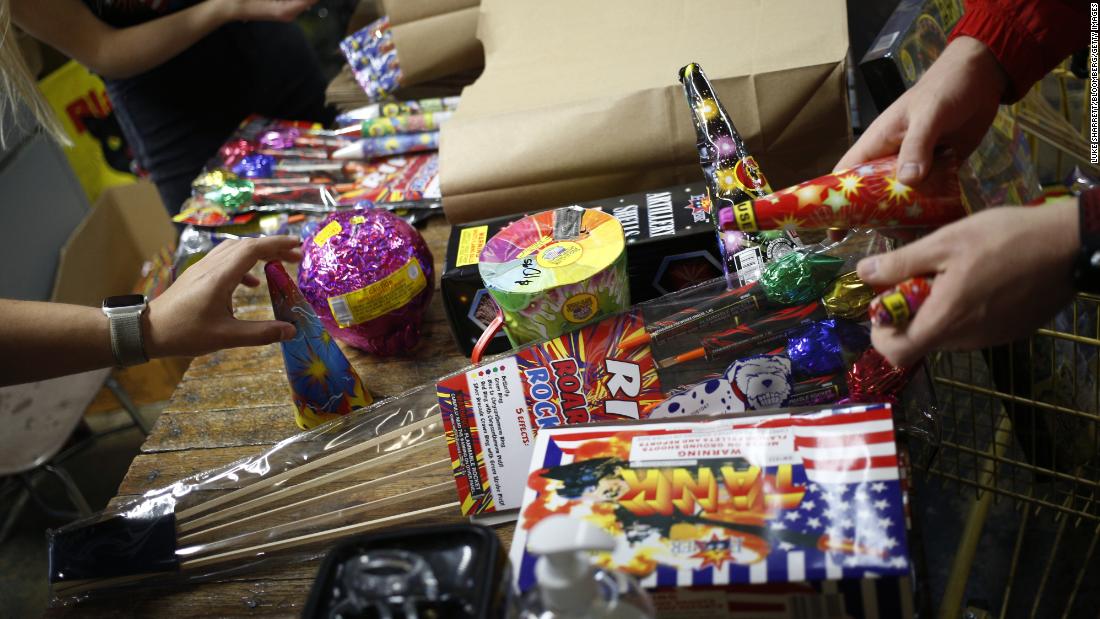
The study looked at 12 different retail fireworks and found that once activated, five of them released particle emissions that could damage human cells and animal lungs.
Consumers tend to forget about the toxins they release, said Terry Gordon, study author and professor in the department of environmental medicine at New York University’s Grossman School of Medicine.
“You or your family are launching a ton of fireworks, and you are doing it safely when it comes to physical injury, but people are unaware that they are inhaling high levels of toxic metals,” Gordon said.
According to the study, the toxins come from the different metals in fireworks that cause them to change color. For example, the study says that blue fireworks can be made of copper and red fireworks can contain strontium.
Gordon said his study did not look at whether certain colors released more toxic metals than others. However, certain types of firecrackers had lower levels of toxicity. “Firecrackers had very high levels of aluminum,” said Gordon. “As for toxicity, they were very low.”
Lead emission
Their experiment consisted of lighting consumer fireworks in a stainless steel chamber, filtering the particles with a pump, and then exposing human and mouse cells to the particles.
During his investigation, Gordon said he discovered that two of the fireworks emitted lead particles. According to the study, one of them was 10 times more harmful compared to the control in the experiment.
Gordon said the firework emitted lead particles at 40,000 parts per million, which is extremely high. Normally, lead should not be emitted at all, he said.
“Although this lab has requirements for the importation and security of fireworks testing, it is not broad enough to capture all the fireworks that should be made illegal,” Gordon said.
John Rogers, executive director of AFSL, said his organization randomly samples fireworks boxes because the group does not have the ability to test each box. His team works in Chinese factories to ensure that fireworks not only meet federal standards, but also voluntary AFSL standards.
For example, federal regulations require that the shell-effect ball cannot exceed 1.75 inches in diameter, but AFSL imposed additional safety requirements, according to Rogers.
“We talk about how high they have to go into the air, what is the maximum explosion radius and things of that nature,” Rogers said.
According to Rogers, AFSL monitors about 85% to 90% of fireworks that are sent from China to the United States. In tests, Rogers said his team does not usually find the presence of lead in the samples.
Potential effects: respiratory problems
Gordon said his study did not investigate the effects that these toxins like lead have on the body, but said they could lead to breathing problems.
“I could hypothesize that people could, especially susceptible people like asthmatics, increase episodes,” Gordon said.
Particles can also have a negative effect on children’s respiratory systems, according to Dr. Kristin Van Hook, president of the American Academy of Pediatrics section on pediatric pulmonology and sleep medicine. She suggested that children avoid standing where smoke from fireworks blows.
“Let the adults be the ones to light the fireworks and stay upwind so the smoke blows in the breeze,” said Van Hook.
She said she has seen cases of children with asthma who, after breathing in the fumes from the fireworks, had to go to the emergency room. Van Hook recommended limiting the amount of time children are exposed to fireworks fumes and carefully monitoring for any signs of difficulty breathing.
Gordon said he would like to conduct human experiments at a fireworks show to see the real-time effects of particles on the body, but that in the past he has faced challenges that make testing difficult. Specifically, the changing direction of the wind makes it difficult to know where to stop, Gordon said.
“The wind was blowing in a certain way, so I put my sample upwind,” Gordon said. “When the time came, it was the wrong direction.”
For families, Gordon recommended that they be aware of what their children are exposed to and that everyone should try to stay upwind while near fireworks. The fireworks industry needs to have more safety regulations, he added.
“Given what we’ve found, I propose that they … make sure they import safer fireworks and that’s what consumers use,” Gordon said.
.